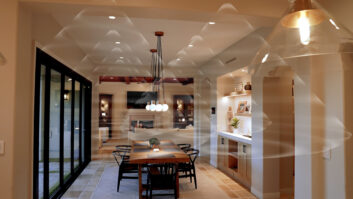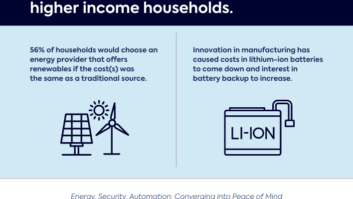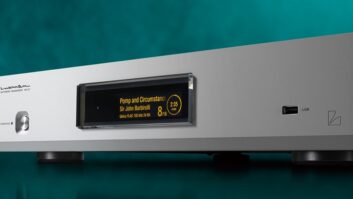According to new Parks Associates research of 1,000 U.S. broadband households with a wireless home network, households commonly experience issues such as slow downloads, dead zones, and interference with other devices with their wireless networks. The study found that nearly 40 percent of all U.S. broadband households with a wireless router have and/or are currently experiencing problems with their wireless network.
Among those experiencing problems, 87 percent have experienced a slow connection or a dead zone, and 63 percent continue to experience these problems despite efforts to resolve them. This equates to 15 million households that continue to experience dead zones or slow wireless connections despite upgrades to internet service or in-home equipment such as the purchase of a new router.
Also according to the study, 27 percent of respondents experiencing an issue with their wireless home network report that the problem can be attributed, at least in part, to too many devices connected to the internet at the same time.
More than half of respondents experiencing wireless network problems said they would be “very comfortable” using a wired solution to improve the performance of their network. Specifically, 58 percent of all network owners report being “comfortable” (rating 5–7 on a 7-point scale) using the existing cable (coax) wiring in their homes to improve their home network’s performance. A similar number report being comfortable using the existing electrical wiring in their homes (56 percent), and 52 percent report being comfortable using ethernet/Cat-5 wiring.
“Many consumers experience poor home network performance and congestion problems, and the number will increase as the number of internet-connected devices in the home climbs,” said John Barrett, director of consumer analytics, Parks Associates. “Wired solutions are appealing options for resolving these problems.”
“The willingness of end users to seek out and use a wired solution for their home networks confirms what we have been saying all along: you still need a wire to do the heavy lifting for complete and comprehensive connectivity,” said Charles Cerino, president of MoCA.
Additional highlights of the study include:
- 28 percent of respondents experiencing wireless network problems have considered using Ethernet/Cat-5 wiring to improve their home network’s performance, while 27 percent have considered using the existing electrical wiring or the existing coax wiring in their home.
- Owners of large homes are much more likely than those with smaller homes to consider using Ethernet, electrical wiring, or coax to improve their home network performance. Ninety-seven percent of respondents with a home larger than 3,000 square feet report considering at least one of these wired options, compared to 25 percent of owners of homes that are 2,000 square feet or smaller.
- Consumers who have purchased networking equipment in the past to address a problem with their wireless network are also more likely to have considered using a wired solution. Seventy-nine percent of these network equipment purchasers have considered using a wired solution to improve their home networks, compared to 44 percent of those who have not made a network equipment purchase to address a home network issue.
“Consumers’ comfort with wired solutions signals an opportunity for industry players,” said Jennifer Kent, director of research quality and product development, Parks Associates. “The industry has focused most of its attention on consumers’ demand for networking mobility, but there remains a need for wired solutions that can address performance issues.”
These and other findings are the result of extensive research of 1,000 home network owners living in U.S. households with broadband internet access. All respondents are heads-of-household ages 18 and older.
The summary report of the research at is available at www.mocalliance.org.
Research methodology
MoCA contracted Parks Associates to conduct a consumer survey to gain an in-depth understanding of home network owners’ current home network types, usage, issues, frustrations, and preferences. As part of this assessment, Parks Associates designed and fielded an online survey in February 2015 to 1,000 home owners in the U.S. Respondents were chosen at random but had to have broadband internet access and a home network router. All respondents were heads of households, age 18 or older.
Parks Associates estimates that there are 79 million home network households in the United States, which represents 82% of all households with broadband internet access. 61 million, or 64 percent of all broadband households, have a wireless home network.







